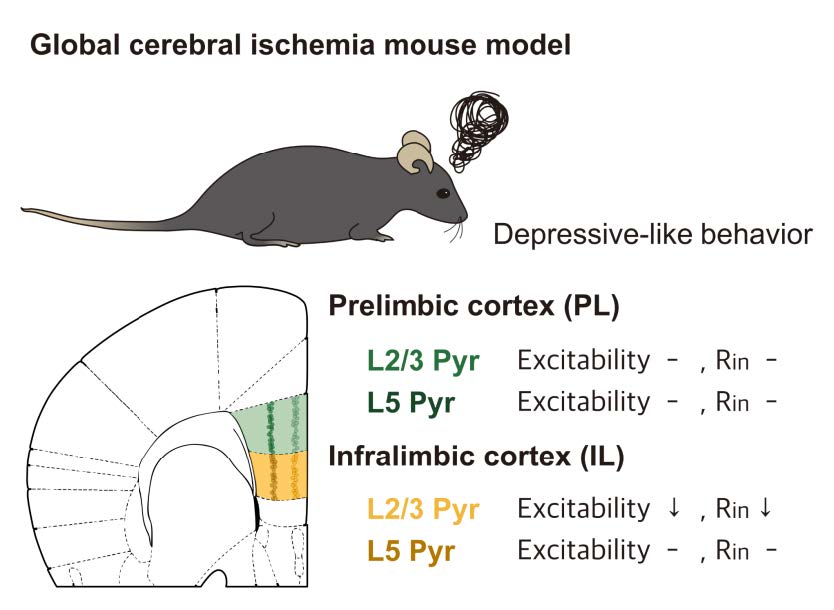Articles
Article Tools
Stats or Metrics
Article
Original Article
Exp Neurobiol 2023; 32(4): 302-312
Published online August 31, 2023
https://doi.org/10.5607/en23017
© The Korean Society for Brain and Neural Sciences
Global Cerebral Ischemia-induced Depression Accompanies Alteration of Neuronal Excitability in the Infralimbic Cortex Layer 2/3 Pyramidal Neurons
Dong Cheol Jang1, Seunghwan Choi2, Geehoon Chung1 and Sun Kwang Kim1,2*
1Department of Physiology, College of Korean Medicine, Kyung Hee University, Seoul 02447, 2Department of East-West Medicine, Graduate School, Kyung Hee University, Seoul 02447, Korea
Correspondence to: *To whom correspondence should be addressed.
TEL: 82-2-961-0323, FAX: 82-2-961-0333
e-mail: skkim77@khu.ac.kr
This is an Open Access article distributed under the terms of the Creative Commons Attribution Non-Commercial License (http://creativecommons.org/licenses/by-nc/4.0) which permits unrestricted non-commercial use, distribution, and reproduction in any medium, provided the original work is properly cited.
Abstract
Cerebral ischemia can lead to a range of sequelae, including depression. The pathogenesis of depression involves neuronal change of the medial prefrontal cortex (mPFC). However, how cerebral ischemia-induced changes manifest across subregions and layers of the mPFC is not well understood. In this study, we induced cerebral ischemia in mice via transient bilateral common carotid artery occlusion (tBCCAO) and observed depressive-like behavior. Using whole-cell patch clamp recording, we identified changes in the excitability of pyramidal neurons in the prelimbic cortex (PL) and infralimbic cortex (IL), the subregions of mPFC. Compared to sham control mice, tBCCAO mice showed significantly reduced neuronal excitability in IL layer 2/3 but not layer 5 pyramidal neurons, accompanied by increased rheobase current and decreased input resistance. In contrast, no changes were observed in the excitability of PL layer 2/3 and layer 5 pyramidal neurons. Our results provide a new direction for studying the pathogenesis of depression following ischemic damage by showing that cerebral ischemia induces subregion- and layer-specific changes in the mPFC pyramidal neurons.
Graphical Abstract

Keywords: Cerebral ischemia, Depression, Medial prefrontral cortex, Prelimbic cortex, Infralimbic cortex, Excitability


